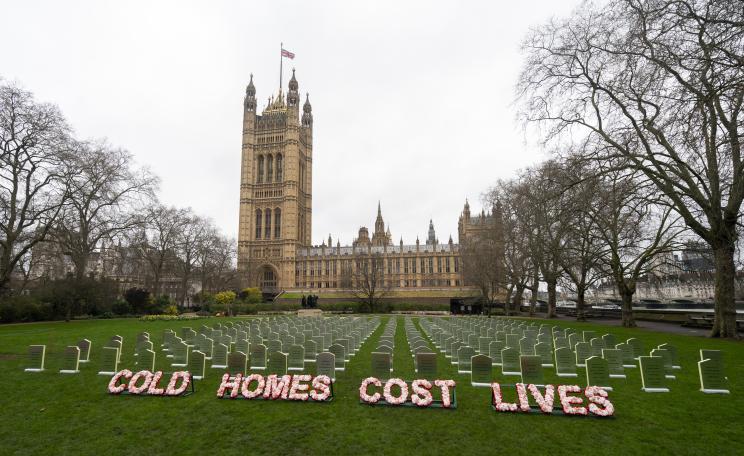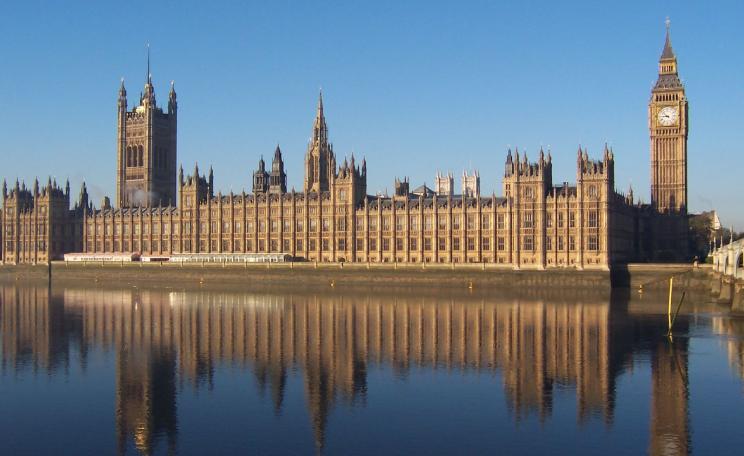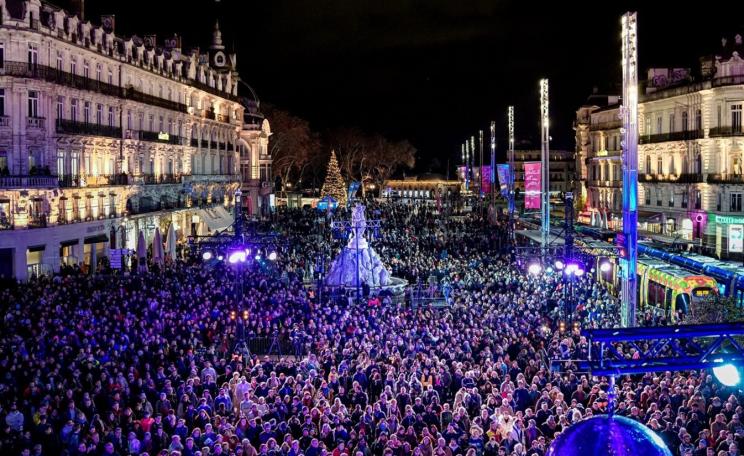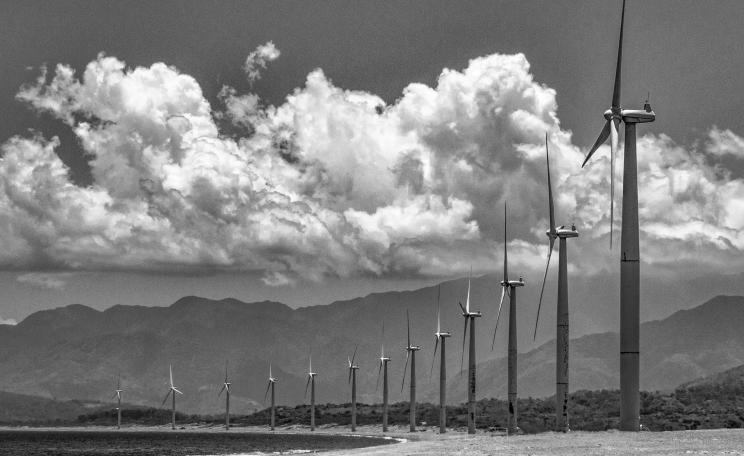Khan’s nervousness about being accused of hypocrisy shapes his attitude to Londoners in general, and to young people angry about climate change in particular.
If eloquence and humour were enough to tackle climate breakdown, this book would take us a long way. But it’s very short on honest assessments of the problems and unvarnished discussions of how to address them. And that, given London Mayor Sadiq Khan’s reputation as a “climate leader”, is scary.
Khan, now half way through his second term as Mayor of London, traces the “beginning of my journey as a climate activist” to breathing problems he experienced after running the London Marathon in 2014.
A diagnosis of adult-onset asthma “made me think about many issues I had never really considered. Had the air we breathed always been this bad? How many people were affected? Was air pollution linked to climate change?”
Asthma
Previously, he writes, “I had never been particularly ‘green’'. He had driven a Saab convertible and in parliament voted for a third runway at Heathrow. “Climate change had always seemed very far away – both geographically and temporally. [...] Asthma made me think again.”
As Labour candidate for Mayor in 2016, Khan reversed his stance on Heathrow, attracting accusations “not just of inconsistency, but political opportunism”.
The truth was, he writes, “I had been on a political journey”. He had met with groups such as the Heathrow Association for the Control of Aircraft Noise (HACAN), who had pointed to the data: 10,000+ premature deaths a year in London from air pollution.
Khan claims credit for bringing together an “eclectic band of activists, local councils and stakeholder groups”, whose campaign against the third runway culminated in a Court of Appeal ruling in 2020 against the government’s decision to proceed. The project is still on hold.
“Perhaps my actions had even started to restore [campaigners’] faith in politicians”, he muses.
Tension
I doubt it. Because in May 2016, a few days after taking over at City Hall, Khan paved the way for expansion of London City Airport. He ordered the Greater London Authority’s land department to drop its objection to a compulsory purchase order of land for it.
“Hypocrisy?”, HACAN asked. The £400 million-plus expansion, bitterly opposed by local residents, included a new taxiway and eight new parking places, and was completed in 2020.
Khan’s nervousness about being accused of hypocrisy shapes his attitude to Londoners in general, and to young people angry about climate change in particular.
Since then, Khan has shifted his position, and said that neither the expansion of Gatwick airport, nor the further growth of London City, are compatible with climate targets.
Why not discuss this in Breathe? That would have helped readers to understand how politicians weigh up competing pressures: in this case, an existential climate crisis versus business passengers getting to their meetings more comfortably.
This tension – corporate imperatives versus human ones – was also evident, straight after Khan was first elected, when he junked his manifesto pledge to establish a municipal “not-for-profit company providing a comprehensive range of energy services”, including making renewably-generated electricity available to Transport for London and other public bodies.
Khan, on advice from Cornwall Insights, preferred a white-label partnership with Octopus Energy to a public body.
Headaches
Campaigners argued that an opportunity had been missed to reduce more rapidly greenhouse gas emissions from electricity generation, and energy poverty, while strengthening the public sector.
Challenged over his broken promise at a meeting with South East Regional Trades Union Congress delegates in October 2017, “the Mayor completely lost his temper”, a participant recalled to The Ecologist.
Again, corporate pressure versus climate policy. Again, not a word in Breathe. In fact Khan writes nothing about how emissions from provision of electricity and heat to London’s homes – one of the biggest climate headaches in any city – will be tackled.
Nor does he mention of “embedded” emissions in the built environment (i.e. the emissions cost of building materials and construction) that architects, urban geographers and energy specialists angst over.
And that’s a shame, because last year, when M&S announced plans to obliterate its flagship Oxford Street store and rebuild it from scratch, conservationists and architects insisted that retrofitting was less carbon-intensive than demolition-plus-construction ... but Khan sided with the company’s bosses.
Fraudulent
Save Britain’s Heritage asked Khan to challenge the carbon-spewing demolition plan, which directly contradicts the Greater London Authority (GLA) Circular Economy Policy. City Hall claimed falsely it had “no grounds” to intervene.
It was left to Simon Sturgis of Targeting Zero to show that M&S’s plan flouted GLA retrofit guidelines, and was inconsistent with a positive architectural response to the climate crisis and “net zero” legislation.
City Hall took the view that refurbishment would have a larger total carbon footprint than M&S’s new build. But Sturgis’s report, published in January 2022, showed that M&S’s comparison of new build with a “light touch refurbishment” was fraudulent, and that a comprehensive retrofit was the lower carbon solution “under all measures of carbon efficiency”.
City Hall appears to have accepted M&S’s argument, rather than the architects’. Corporate pressure versus climate policy.
Campaigners pushed for a public inquiry into M&S’s scheme, in October last year. M&S rely on City Hall’s “endorsement”, Matthew Fraser, representing Save Britain’s Heritage, pointed out – but the GLA did not “dig deep enough” when considering alternatives.
Architects are hopping mad about the threatened M&S demolition, not only because it would immediately release the same amount of carbon as driving a typical car 99 million miles, but also because it is missing a chance to set a good example.
So why doesn’t Khan feel the same way? Why doesn’t he implement City Hall’s own standards?
Similar questions could be asked about the redevelopment of the site of Holloway women’s prison, which closed in 2016. The GLA paid £82 million in subsidies to Peabody Housing Association, the developer.
But local campaigners say that authority has not been particularly demanding about building standards in return for its money, and that it’s a local voluntary group, Community Plan for Holloway, that is pressing hardest for “low impact greener building techniques”, and women’s labour, to be used.
Discredited
In Breathe, we get some insight into Khan’s state of mind, in a passage about the biggest corporate-pressure-versus-climate issue of his mayoralty, and his biggest spending decision: the £2.2 billion Silvertown tunnel, a four-lane motorway under the Thames just east of the Blackwall tunnel.
With the tunnel project, Khan has opted to endanger transport sector emissions reduction targets, in order to relieve traffic congestion ... even though transport researchers say it won’t do that. He claims the tunnel will alleviate air pollution ... even though air quality experts say it could well make it worse.
Khan stubbornly repeats long-discredited justifications for the project: the Blackwall tunnel, one bore of which opened in 1967 and both bores of which were upgraded in the 2010s, is “Victorian” (?!); closures cause queues (as though these could not be minimised by modern traffic management techniques!); and congestion exacerbates pollution (doubtful). Plus some third-rate greenwash (“we have made the construction process greener”, all vehicles to the site must “meet the highest emission standards”, bla bla bla).
What Khan is silent about in Breathe – despite transport, health and climate researchers screaming it at him for years – is that more roads produce more traffic. Infrastructure projects that favour cars and lorries undermine the shift to alternative modes of transport.
This relates to an issue about which Khan seems naively unaware: that air pollution policies and climate policies overlap, but work at different scales. Khan repeatedly refers to the Ultra Low Emission Zone (ULEZ) – a first-class air pollution policy – as a “climate intervention”, although, since it doesn’t reduce the total amount of traffic much, its climate effect is limited. For example, City Hall reckons there was a five per cent year-on-year fall in the number of vehicles in inner London in October 2022, as a result of ULEZ expansion to inner London in October 2021. As Drew Shindell, a climate scientist, explains, clean air and climate policy benefits “complement each other extremely well”, but clean-air benefits “occur rapidly” when action is taken, while “climate change mitigation benefits typically take a long time”; spatially, also, air pollution can be tackled locally, while climate is global.
Incompatible
A report commissioned by C40 Cities, the alliance of global cities of which Khan is now chair, warned in 2015 that the time for carbon-heavy urban infrastructure was over.
But Khan ignored that, just as he did a 2021 warning from dozens of researchers of climate, energy and urban planning that the Silvertown tunnel was incompatible with policies that rapidly reduce transport sector emissions. Perhaps he thinks he knows better than the specialists.
“I had a sense that the local community agreed [with building the tunnel]”, Khan claims. Oh, sure. Four local Labour-controlled councils, London Labour’s regional conference, and dozens of trade union bodies, community and environmental groups oppose the project; thousands of people have demonstrated against it; polling showed that most Londoners would rather funds went on walking, cycling and public transport.
Khan spitefully compares this groundswell of local opposition to the right-wing “vocal minority” that opposes ULEZ expansion.
That meanness does him no favours. I would prefer a franker discussion of why, faced with a choice between a business-friendly road project and meeting climate targets, he chose the former.
Baffled
After the Covid pandemic, Khan, apparently still unconvinced that more roads produce more traffic, nevertheless saw in the recovery “a unique chance to reshape our city” with fewer cars. “We could not replace a Covid-19 health crisis with an air-quality crisis, sparked by a return to pre-ULEZ levels of car use.”
City Hall did indeed take some post-lockdown initiatives on alternative transport modes, including the Streetspace cycle lane expansion scheme and support for low-traffic neighbourhoods.
But when the business-versus-climate-policy dilemma reared its ugly head, Khan faltered again. He scrapped the central London congestion charge in the evenings, triggering a 60 per cent surge in traffic.
Oliver Lord of the Clean Cities Campaign said at the time that he and his colleagues were “baffled”: the decision “flew straight in the face of [Khan’s] clean air and climate targets”. Did Khan comment in Breathe? No.
Techno-fix
City Airport expansion; a lost opportunity to do municipal electricity supply; the congestion charge in the evenings; M&S Oxford Street – all local pieces of the jigsaw. There is also a global omission from Breathe: carbon budgets.
Climate scientists have developed these budgets to inform policies that would limit global heating to e.g. 1.5° or 2° above pre-industrial levels.
The budgets prescribe quantities of greenhouse gases that a country, city or region can emit, in a certain time frame, if emissions reduction targets are to be met. Without these, researchers warn, “net zero” targets are little more than empty words.
London’s 1.5° compatible plan, published in 2018, sets carbon budgets in line with those used by the Climate Change Committee (CCC).
But the Tyndall Centre for Climate Change Research has set more stringent budgets for the UK and other rich countries, to allow developing countries more room to make economic changes.
The Tyndall Centre also eschews reliance on sucking carbon out of the atmosphere, a speculative techno-fix.
In 2021, I questioned City Hall’s approach in correspondence. I thought Heidi Alexander, then deputy mayor for transport, was hiding behind the CCC’s methodology, which gives rich countries too much licence to keep emitting carbon, to avoid tough decisions on transport.
Insufficient
David Bellamy, chief of staff, told me that the Tyndall centre “takes a top down approach by allocating a global carbon budget to different countries and cities”, whereas the 2015 Paris climate conference “deliberately took a bottom up approach and asked countries to put forward their nationally determined contributions”.
Exactly. And those voluntary contributions are insufficient. They leave the world heading for 2.2°-3.4° of warming. But, Bellamy told me, “there is no authority which says the Tyndall Centre approach is superior”, and no reason the GLA should use it.
All this came to mind when I read Khan’s assessment of the Paris agreement. “In the years after it was signed, the agreement had taken a beating”, he writes; “nations just weren’t doing enough to meet their commitments”.
So, while Khan acknowledges that the Paris voluntary commitments are simply not good enough, his City Hall apparatus uses budgets based on those commitments. And “no authority” will persuade Bellamy and his colleagues to use the Tyndall budgets, that provide a framework for climate justice for the global south.
That’s called facing both ways at the same time.
Unlawful
Khan’s nervousness about being accused of hypocrisy shapes his attitude to Londoners in general, and to young people angry about climate change in particular.
He seems genuinely interested in what people outside the political bubble think: he discusses the “optimism bias” that might lie behind apparent “apathy” on climate issues and questions the right-wing claim that a “silent majority” opposes action on climate.
But when it comes to the growing number of people who want militant action on climate, and fast, Khan is guarded. He met an Extinction Rebellion delegation in 2019 (see box at the end), but denounces “unlawful” protest – despite knowing fine well that the government is systematically shrinking the space for lawful protest.
Khan writes that when the GLA announced a “Green New Deal” in 2021, “we wanted our approach to be open and democratic”. That doesn’t square with what actually happened. In February that year, the Labour group of the London Assembly stepped in to vet questions for the public Mayor’s Question Time session, to stop anyone asking about the Silvertown tunnel.
In the summer of 2022, security agents linked to the mayor’s office spied on, singled out, and excluded from the State of London Debate with Khan, members of the Green New Deal Rising campaign group who wanted to challenge him about the tunnel.
Comment
I am a Londoner born and bred, and have lived in Greenwich borough most of my life. Sadiq Khan got my first-preference vote in 2016 and second-preference in 2021.
I welcome the ULEZ and other such initiatives on air pollution and greenhouse gas emissions. But to call Khan a “true climate leader”, as Labour climate spokesman Ed Miliband does in an endorsement for Breathe, is too kind. Khan’s record is mixed at best. We need action, not words.
I contacted the publisher of Breathe and asked if Sadiq Khan would like to comment on the points made on municipal energy provision, M&S Oxford Street, the ULEZ and carbon budgets. No comment was received. A spokesperson for City Hall said they were unable to comment on Breathe, which was written by Khan in a personal capacity.
Backlash
One chapter of Breathe is centred on Sadiq Khan’s meeting in 2019 with three Extinction Rebellion protesters, after the organisation blocked several of London’s main bridges. I asked one of them, Sam Knights, how he remembered the meeting.
He said: “I understand why Sadiq wanted to tell the story from his own perspective. We all tell different versions of the same story.
"Over time, those stories become integral to how we define ourselves, and I am pleased that he looks back on our meeting fondly. Despite our political differences, I do too. But I do remember some of the choreography slightly differently.
“The meeting came after Sadiq tweeted that Extinction Rebellion should end our protests and that we must let London return to ‘business as usual’. But business as usual was so obviously part of the problem, and the inevitable backlash he received was, in part, the reason he eventually agreed to meet with us. Sadiq now claims that he supported the aims of our protests. That is news to me.
“He did, as he writes, implement some changes following our meeting. Again, this is more than most politicians. But he has not subsequently matched those words with action. He has supported projects such as the Silvertown tunnel which are incompatible with a credible climate plan and his ambition to transform London is severely lacking.
“Instead of writing books about the climate emergency, he needs to start fighting for real, systemic change. We need a Green New Deal for London. We need investment in public services, wealth taxes, rent controls. We are living through multiple crises and the Mayor of London should be fighting for these policies every single day.
“Of course, the meeting he recalls was also a publicity stunt. The meeting allowed us to leverage the UK Government into agreeing to meet with us. It set in motion a series of events which ultimately led to the UK becoming the first country in the world to declare a climate emergency. If Sadiq now uses the meeting for his own reasons, then so be it. We did too.”
This Author
Simon Pirani is honorary professor at the University of Durham in the UK, and author of Burning Up: A Global History of Fossil Fuel Consumption (Pluto, 2018). He writes a blog at peoplenature.org. Follow him on Twitter: @SimonPirani1.







